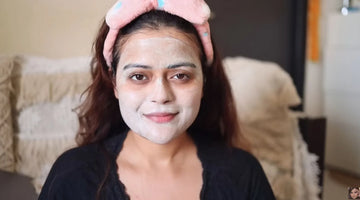Exfoliating scrubs remove dead skin cells. They reveal smoother, brighter skin.
Using an exfoliating scrub correctly boosts its benefits and prevents skin damage. Exfoliating is a vital step in skincare. It clears clogged pores, reduces acne, and promotes cell turnover. Proper exfoliation can enhance your skin's texture and appearance. However, using the scrub the wrong way can harm your skin.
This introduction will guide you through the effective use of an exfoliating scrub. You'll learn the importance of gentle application, frequency, and choosing the right product for your skin type. Ready to achieve radiant skin? Let's dive into the essentials of using exfoliating scrubs safely and effectively.
Benefits Of Exfoliating Scrub
Exfoliating scrub helps remove dead skin cells, leaving your skin smooth and refreshed. Gently massage the scrub onto damp skin using circular motions, then rinse thoroughly. Regular use can improve skin texture and promote a healthy glow.
Exfoliating scrubs can be a game-changer in your skincare routine. They remove dead skin cells, unclog pores, and can make your skin look and feel smoother. If you're wondering why you should add an exfoliating scrub to your regimen, here are some compelling benefits to consider.
Radiant Skin
Using an exfoliating scrub can give your skin a radiant glow. By removing the layer of dead skin cells, you allow fresh, new cells to come to the surface, making your complexion look brighter and healthier. Have you ever noticed how your skin looks after a professional facial? You can achieve a similar effect at home with regular exfoliation. Your skin will reflect light better, making it appear more youthful and vibrant.
Improved Texture
Exfoliating scrubs also improve the texture of your skin. If you have rough patches or uneven skin, a scrub can help smooth things out. The fine grains in the scrub work to polish your skin, making it feel softer to the touch. I remember the first time I used an exfoliating scrub. My skin felt incredibly smooth, as if I had just removed a layer of grit. It was a simple yet effective way to improve my skin's texture without any fancy treatments. Consider how much more effective your other skincare products will be. When your skin is smooth, serums and moisturizers can penetrate better. This makes your overall skincare routine more effective. Give it a try and see the difference for yourself. You might be surprised at how much better your skin can look and feel with just a small addition to your routine.
Choosing The Right Scrub
Choosing the right exfoliating scrub is crucial for achieving healthy skin. Not all scrubs suit every skin type, and understanding what works best for your skin can make a big difference. Let's explore how to choose the perfect scrub for your needs.
Skin Type Considerations
Your skin type plays a key role in selecting an exfoliating scrub. For dry skin, choose a gentle scrub with moisturizing properties. Sensitive skin needs a scrub with fine particles to avoid irritation. If you have oily skin, look for a scrub that helps control oil production. Combining skin benefits from a balanced scrub that addresses oily and dry areas.
Ingredients To Look For
The ingredients in your exfoliating scrub matter. Natural ingredients are often better for the skin. Look for scrubs with ingredients like sugar, salt, or oatmeal. These are gentle and effective. Avoid scrubs with harsh chemicals that can irritate. Salicylic acid is good for acne-prone skin. It helps to unclog pores. Lactic acid can help to hydrate while exfoliating.
Proper Application Techniques
Gently massage the exfoliating scrub onto damp skin using circular motions. Focus on areas prone to dryness and roughness. Rinse thoroughly with warm water, and dry your skin with a soft towel.
Proper application techniques for exfoliating scrub can enhance your skincare routine. It's essential to follow specific steps to get the best results. Using the right method ensures that your skin gets the benefits without causing harm.
Frequency Of Use
Use an exfoliating scrub two to three times a week. Overuse can irritate the skin. Adjust the frequency based on your skin type. Sensitive skin may need less frequent use, while oily skin might tolerate more frequent use. Always listen to your skin's needs.
Gentle Circular Motions
Apply the scrub using gentle circular motions. This helps to remove dead skin cells effectively. Use your fingertips for a light touch. Avoid pressing too hard. Aggressive scrubbing can damage your skin. Focus on areas prone to dryness or roughness. Rinse thoroughly with warm water. Follow with a moisturizer to keep skin hydrated.
Pre-exfoliation Preparation
Prepping your skin is essential before using an exfoliating scrub. Proper preparation can enhance the scrub's effectiveness and help avoid irritation and damage. This step is often overlooked, but it makes a big difference.
Cleansing Your Skin
Start by cleansing your skin. Use a gentle, non-abrasive cleanser to remove dirt, oil, and makeup. Clean skin allows the scrub to work better. Rinse with lukewarm water. Pat dry with a soft towel. Do not rub the skin.
Steam For Better Results
Steaming your face can open pores, making exfoliation more effective. Boil some water and pour it into a bowl. Place your face over the bowl. Cover your head with a towel. Steam for about 5-10 minutes. Be careful not to burn yourself.
Post-exfoliation Care
After using an exfoliating scrub, your skin needs special attention. Proper care helps soothe and protect your skin, ensuring the best results from your exfoliation routine.
Hydration And Moisturizing
Exfoliating can sometimes leave your skin feeling dry. It is crucial to hydrate your skin immediately after exfoliation. Use a gentle, alcohol-free toner to balance your skin's pH levels. Follow with a hydrating serum or essence to lock in moisture.
Next, apply a rich moisturizer to nourish your skin. Look for products with ingredients like hyaluronic acid, glycerin, or aloe vera. These help retain moisture and soothe your skin. Make sure to choose a moisturizer that suits your skin type.
Sun Protection
After exfoliating, your skin becomes more sensitive to sunlight. Always apply sunscreen with at least SPF 30. This helps protect your skin from harmful UV rays. Reapply every two hours if you are outdoors.
Consider using a broad-spectrum sunscreen. This type of sunscreen protects against both UVA and UVB rays. Wearing a hat and sunglasses can also provide extra protection. Avoid direct sun exposure during peak hours, usually from 10 AM to 4 PM.
Diy Exfoliating Scrubs
Gently massage the DIY exfoliating scrub onto damp skin in circular motions. Focus on rough areas like elbows and knees. Rinse thoroughly with warm water for smooth, glowing skin.
Exfoliating your skin regularly can help it look fresher and feel smoother. While there are plenty of store-bought options, making your own exfoliating scrubs can be easy, cost-effective, and fun. Plus, you get to control what goes into them, ensuring they're free from harsh chemicals.
Natural Ingredients
Using natural ingredients for your DIY scrubs can be incredibly beneficial. Common items like sugar, coffee grounds, and oatmeal are excellent exfoliants. They gently remove dead skin cells without causing irritation. Honey can add moisture while also offering antibacterial properties. Coconut oil is another favorite for its hydrating benefits and pleasant scent. Lemon juice can help brighten your skin but use it sparingly to avoid sensitivity.
Simple Recipes
Creating your own exfoliating scrub doesn't have to be complicated. Here are a few simple recipes to get you started:
-
2 tablespoons of sugar
-
1 tablespoon of olive oil
-
Mix them together and gently massage onto your skin in circular motions.
-
1/4 cup of coffee grounds
-
2 tablespoons of melted coconut oil
-
Combine and apply to your skin, then rinse off with warm water.
-
2 tablespoons of finely ground oatmeal
-
1 tablespoon of honey
-
Mix well and use it to gently exfoliate your face.
Each of these recipes can be made in minutes using ingredients you already have at home.
Common Mistakes To Avoid
Exfoliating your skin can give you a fresh and glowing look. But, many make mistakes that can harm their skin. Let's explore common mistakes to avoid while using an exfoliating scrub.
Over-exfoliation
Over-exfoliation is a common mistake. It can damage your skin. Scrubbing too often removes the skin's natural oils, leading to dryness and irritation. Limit exfoliation to 2-3 times a week. Give your skin time to heal between sessions.
Ignoring Skin Sensitivity
Every skin type is different. Some scrubs can be too harsh for sensitive skin. Ignoring skin sensitivity can cause redness and pain. Choose a gentle scrub if your skin is sensitive. Listen to your skin's needs. If it feels irritated, switch to a milder product.
Exfoliating For Different Skin Types
For glowing skin, choose an exfoliating scrub based on your skin type. Use gentle circular motions to avoid irritation, and adjust the frequency to prevent over-exfoliation.
Exfoliating is a crucial step in any skincare routine. But different skin types need different care. Knowing how to exfoliate your skin type can help achieve better results. Here are some tips for dry and oily skin types.
Dry Skin Tips
Dry skin needs gentle exfoliation. Harsh scrubs can damage sensitive skin. Use a mild exfoliating scrub, ideally with hydrating ingredients. Look for scrubs with fine grains. They gently remove dead skin without causing irritation. Limit exfoliation to once a week. Over-exfoliation can strip natural oils. Always follow up with a good moisturizer. It locks in hydration and keeps your skin soft.
Oily Skin Solutions
Oily skin can handle more frequent exfoliation. Aim for two to three times a week. Choose an exfoliating scrub with salicylic acid. It helps unclog pores and reduce excess oil. Avoid scrubs with large or rough particles. They can cause micro-tears in the skin. After exfoliating, use a lightweight moisturizer. It prevents your skin from overproducing oil. Consistent exfoliation helps keep your skin clear and fresh.
Frequently Asked Questions
How Do You Use An Exfoliator Scrub?
To use an exfoliator scrub, wet your face and apply a small amount. Gently massage in circular motions. Rinse thoroughly with warm water and pat dry. For best results, use 2-3 times a week. Avoid over-exfoliating to prevent skin irritation.
Do You Use Exfoliating Scrub Before Or After Body Wash?
Use the exfoliating scrub before body wash. Scrubbing first removes dead skin cells, allowing the body wash to cleanse more effectively.
Do You Use Exfoliating Scrub On Wet Or Dry Skin?
Use an exfoliating scrub on wet skin. Wet skin helps the scrub spread evenly and prevents irritation. Gently massage in circular motions for best results. Rinse thoroughly with water.
Do You Wash Off Exfoliating Scrub?
Yes, you should wash off the exfoliating scrub. Use lukewarm water to rinse thoroughly, removing all residue from your skin.
Conclusion
Exfoliating scrub can transform your skin routine. Follow the steps above for the best results. Regular use can lead to smoother, brighter skin. Always choose a scrub suitable for your skin type. Avoid over-scrubbing to prevent irritation. Remember to moisturize after exfoliating.
Your skin will thank you for the extra care. Enjoy the benefits of a healthy, glowing complexion. Exfoliation is key to maintaining beautiful skin. Try it and feel the difference.




